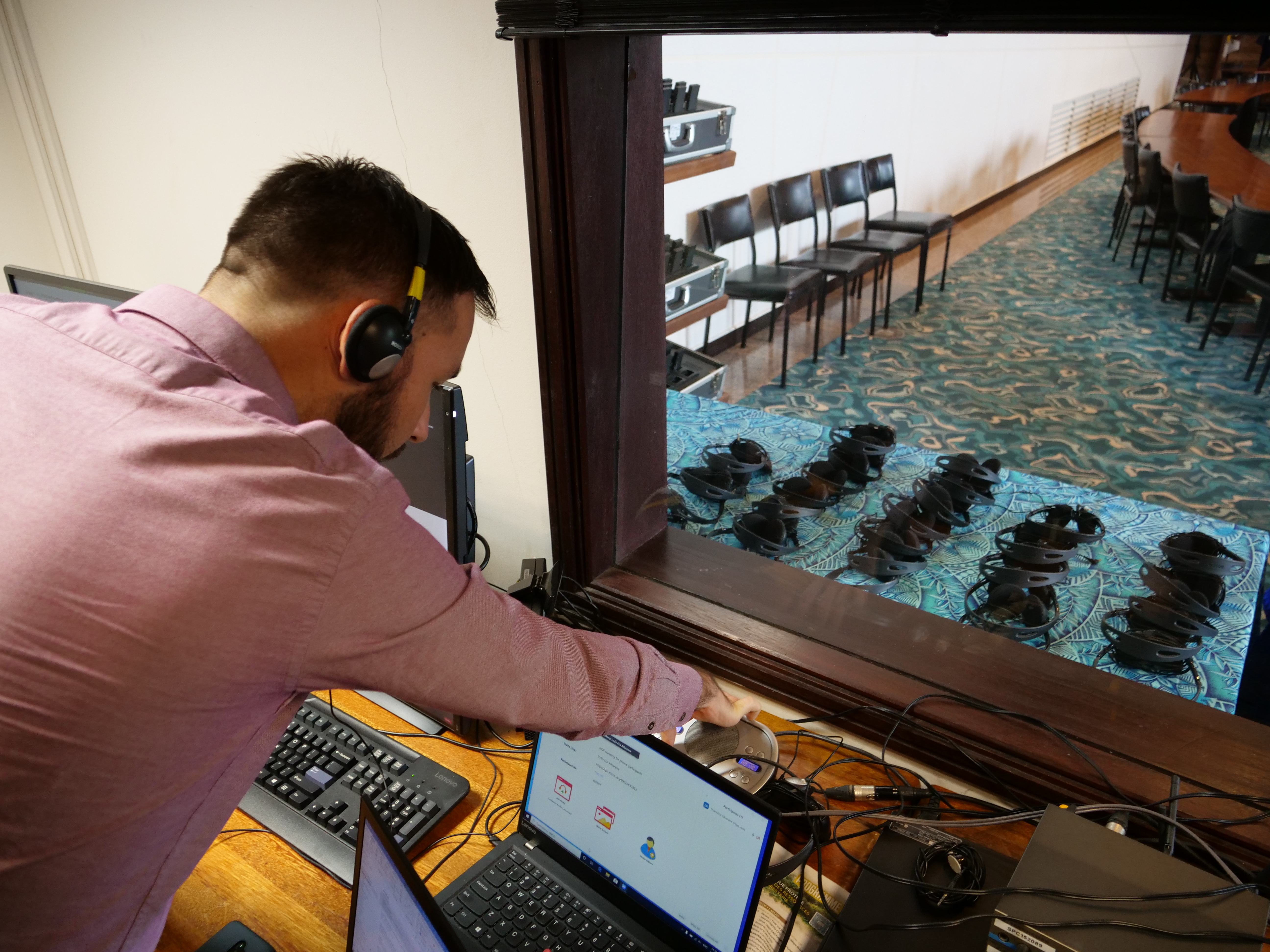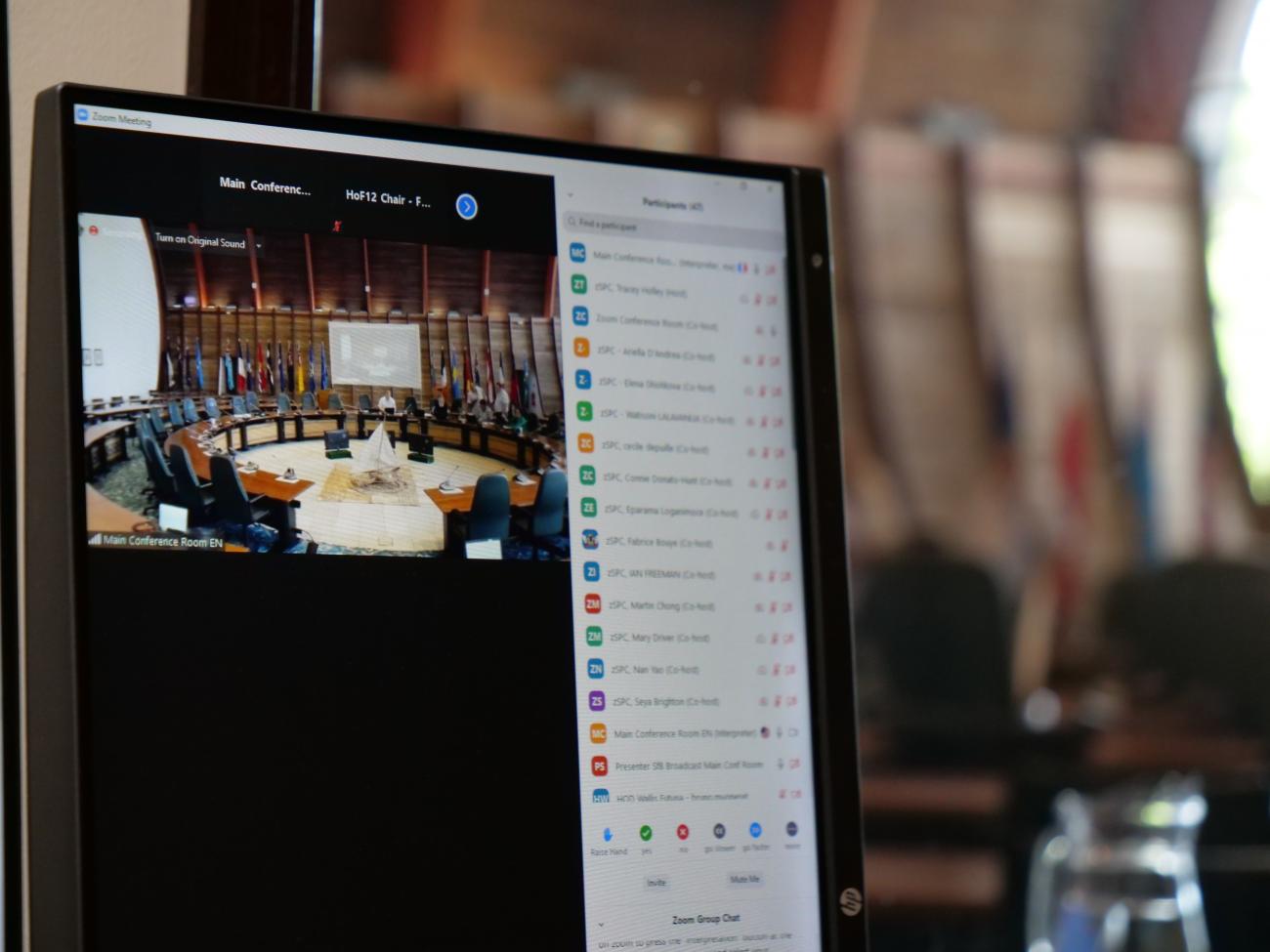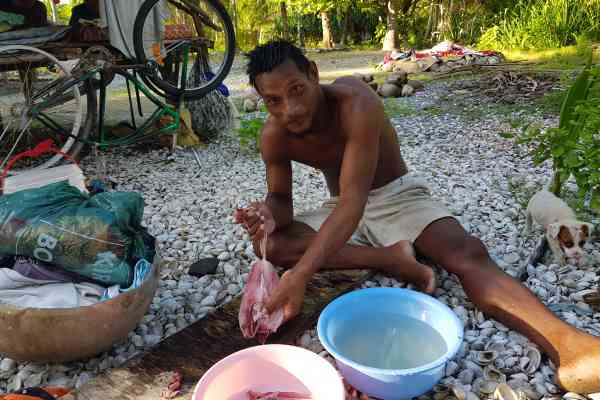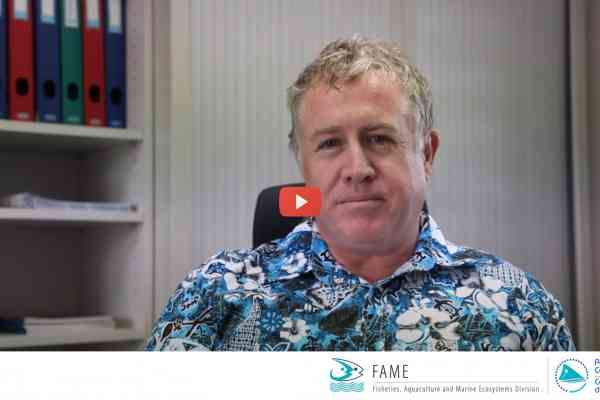(Article disponible en anglais uniquement)
History will certainly remember 2020 as the year in which the COVID-19 pandemic led to profound transformations in how international organisations operate on a daily basis. With travel restrictions and country lockdowns, organisations had to re-think the way they work, especially when it comes to organising international summits.
The Pacific Community (SPC) is no exception to this, and for the first time in history, it had to hold its essential Heads of Fisheries (HoF) meeting online, rather than in the main conference room of the Noumea headquarters.
Transforming such a large event into a remote video conference was both a human and a technical challenge. The Fisheries, Aquaculture and Marine Ecosystems (FAME) division of SPC and the Information and Communication Technology (ICT) teams had to find innovative solutions to the myriad of problems that occurred during the preparation phase of the meeting, eventually managing to put together an event that was, according to the participants, “effective given the inability to meet physically”.
For Neville Smith, Director of SPC’s Fisheries, Aquaculture and Marine Ecosystems (FAME) division, maintaining the event despite the pandemic was critical to “continuing essential service delivery to members”.
During the 11th HoF meeting, in 2019, it was decided to make the event annual instead of biennial, because the themes discussed there - coastal fisheries, oceanic fisheries, and aquaculture - are so essential to the Pacific that they require more frequent dialogue between the decision-makers responsible for these three vital sectors. The success of the digital meeting in 2020 could open a discussion for a virtual version to be held every other year.
With the COVID-19-related working-from-home arrangements, many members and SPC staff became familiar with remote working and video conferencing apps. But hosting such a big digital event, interpreted into two languages with attendees from 6 different time zones was an unprecedented challenge.
A long offline preparation
 “Hosting in-person events for 200+ people at SPC is not a problem,” said Bas Berghoef, Director of Information Services at SPC. “We’re talking logistics, staff, catering, translation, accommodation, travel, etc. But when it comes to a full digital event, it’s a big premiere for the organisation. Our team had to work hard on technical aspects to deliver a smooth experience to over 100 participants with different levels of digitalisation.”
“Hosting in-person events for 200+ people at SPC is not a problem,” said Bas Berghoef, Director of Information Services at SPC. “We’re talking logistics, staff, catering, translation, accommodation, travel, etc. But when it comes to a full digital event, it’s a big premiere for the organisation. Our team had to work hard on technical aspects to deliver a smooth experience to over 100 participants with different levels of digitalisation.”
“What usually takes us 20 hours to put together required 200 to 250 hours of work and 40 more people this time, but the good news is that we are now fully operational to duplicate this format to any other event,” he added.
The event consisted of three plenaries of two and a half hours, attended by over 100 participants.
“Live interpretation was made possible by a sophisticated system of 4 computers linked with interpreters, video conference users and microphones from the main conference room,” reported Jean-Noël Royer, Event Coordinator at SPC.
According to Lodovico Albanese, Information and Communications Technology (ICT) Technician, “the quality of interpretation is one of the success factors of our conferences. That’s why we had to make sure that despite this new virtual format, the same level of service was provided to the participants.”
In a virtual event, interpretation is made more challenging by the quality of the bandwidth, the equipment of the participants, but also their capacity to quickly adopt the right reflexes: for example, an unmuted microphone in a noisy room, or a low-quality headset makes interpreting difficult.
“We are not in a physical setting where a technician can simply walk into the room to fix these issues, so it was essential to identify and share virtual meeting etiquette and to hold a rehearsal,” said Tracey Holley, Planning Officer in charge of the regional coordination of the event.
“By doing that, we were able to ensure that everyone in the team was familiar with the system and that everything could run as smoothly as possible during the 3-day event,” she added.
Productivity and quality of discussions
The overall outcome of the meeting was very positive. According to Tracey Holley, the engagement of the participants was good, despite the new format and structure of the different sessions. For example, the FAME team had to trim the agenda to retain the essentials and shorten the event from 24 to 10 hours, because maintaining good focus amongst the participants is more difficult in an online setting.
“We definitely missed the benefits of the face to face meeting, but the content of the meeting was perhaps more focussed than in physical events” commented Neville Smith. Breakout rooms were used to further engage members in small group discussions on some of the agenda topics. These were appreciated by participants, who had more opportunity to get into the finer details of specific topics, and these sessions produced valuable outputs.
The success of the virtual HoF and the many positive comments expressed by the participants now paves the way for the replication of such online events. This is particularly important at a time when reducing carbon footprint is a priority shared by most of the international development players.


